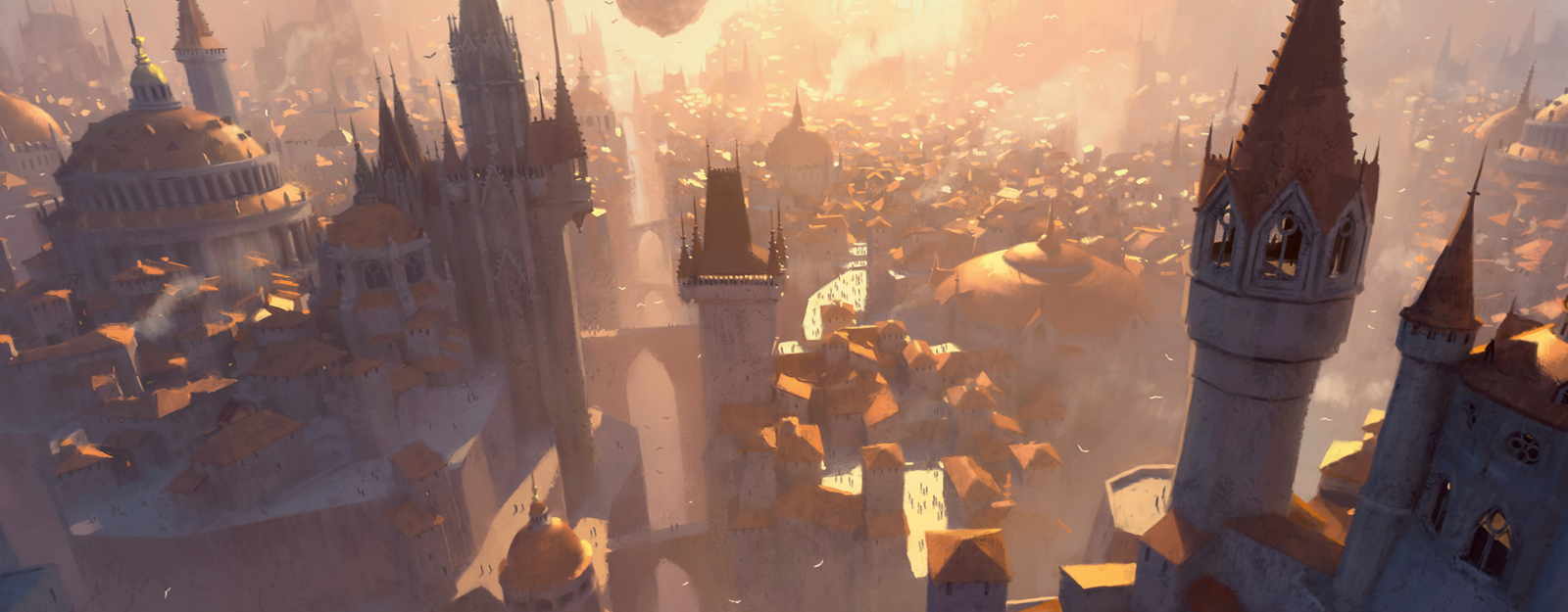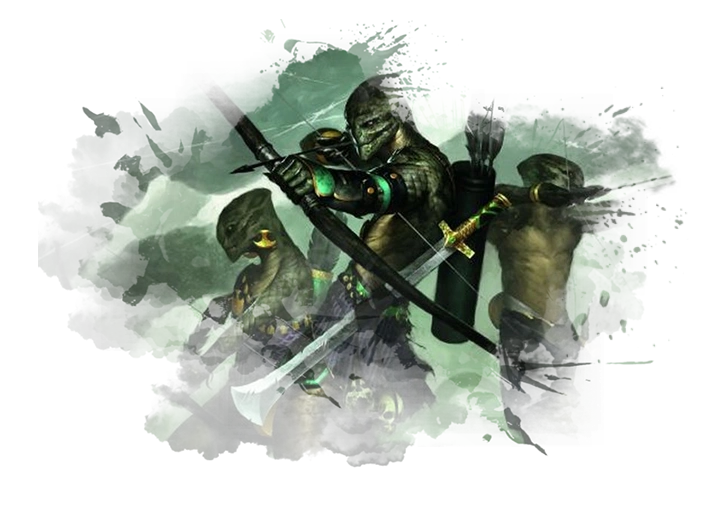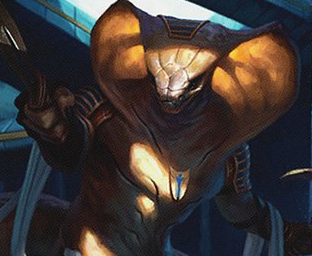Biology
Anatomy and Physiology
Naga physiology is more closely related to a snake than a
Human. Their bodies consist of a head, normally snake-like but there have been documented cases of human-ish heads and features, a torso, two humanoid arms, and a snake-like lower half. Their skin is covered scales with a soft under-body. Their lower half functions almost identical to that of a regular snake, being prehensile and able to coil around objects. The tail is strong enough to allow a Naga to hang from, carry small objects, and to lift the body up a fair amount from a normal 'standing' height.
A Naga's head has varying degrees of resemblance to their reptile cousins. Depending on the individual, a Naga's head can fully resemble a snake or have more vaguely human-like features. Regardless, every Naga has a forked tongue, fangs, slit eyes, and brilles instead of eyelids.
Naga naturally produce a neurotoxin venom within a gland located within their head. A Naga can spit this venom a number of meters away or inject the venom directly into the bloodstream of an individual. The effect of the venom depends on if it comes into contact with the eyes of the victim, or is put into the circulatory system which can cause temporary blindness or paralysis respectively. Naga are immune to their own venom and most other poisons and toxins.
A Naga's skin consists of pattern formations that can come in a variety of different colors, shapes, and patterns. The scales that make up the skin offer meager protection to the Naga that might stop a cut from a blade, but not enough to halt any serious damage. A Naga also sheds their skin about once every four months to allow for more growth and to repair any damage that may have accumulated prior to the shedding.
Naga are cold blooded creatures and cannot generate their own body heat. Many of them live near the equator of Ravnica, but it's not uncommon to see them throughout the world itself. Despite the stereotype, Naga's tend to try to avoid the Undercity due to the cold and wet environment being incredibly uncomfortable to them.
Life Cycle and Sexuality
Naga have functional sexual organs up until old age which is about 90-years-old. Due to their reptilian origins they reproduce by laying eggs instead of carrying the baby to term like most other races of Ravnica. A Naga can lay anywhere between one to five eggs in a single mating period. The eggs take about six months to hatch where the young must be taken care of as they are extremely vulnerable up to about the age of three. A child Naga can be considered self dependent when it reaches the age of eight, and is not considered an adult until the age of twenty. Naga have very long lifespans and have been reported to reach the age of 200 in some individuals. Naga can only breed with other Naga.
Diet
Naga are strictly carnivores. They particularly enjoy eating fish but do not shy away from any meat if presented the options. A Naga's metabolism is very slow, and, depending on the size of the meal, can go without eating for three months before feeling the urge to eat. A Naga that exerts themself, through spellcasting or combat, will have to eat more often than an ordinary citizen.
History
The Naga are a fascinating race of beings in the world of Ravnica. With their serpentine lower bodies and humanoid upper torsos, they are a unique blend of two vastly different species. The origins of the Naga are shrouded in mystery, some believe that they were born directly from the Goddess Pharika, while others claim they evolved from the ancient reptiles that once roamed the world.
During the Age of Empires, Naga were directly involved in the event known as The Rise of the Gorgons. Pharika, God of Afflictions, had awoken from a long slumber and in doing so gave wake to utterly powerful magics and potent diseases that were harnessed by the Gorgons and Naga together. Led by the Gorgon Stheno, this alliance devastated the empires of old with dark magic and sweeping plagues until the powers of Pharika began to wane, and the alliance of serpents was eventually beaten back.
For centuries thereafter, the Naga lived in seclusion, deep within the jungles and forests of Ravnica. However, as Ravnica grew and expanded, the Naga found themselves pushed out of their homes and forced to adapt to a changing world. Despite the challenges that they faced, the Naga remained a proud and powerful race, their snake-like bodies and human-like intelligence allowing them to thrive in the sprawling city-world of Ravnica.
As the other races of Ravnica grew in power, the Naga began to recede into the shadows, eventually becoming a secretive and reclusive people. Naga are known for their cunning and strategic thinking, and many of them are powerful magic users. They are also rumored to have an extensive knowledge of the workings of the world and its magic, which they keep closely guarded in their own communities.
Naga are indeed exceptional in the magical arts and it is believed that this natural affinity was a gift from the goddess herself. The Naga had a preference of using Necromancy as a school of magic as well as other arts that were considered sinister which may have led to the modern day suspicion towards the species. Modern Naga continue to be naturally gifted in magic, though there is not one single school of magic in which they gravitate towards.
"Some Naga move as silently as the sun's reflection on the water."—
Society and Culture
The Naga are one of the many unique races that call Ravnica home. These half snake, half human creatures are known for their wisdom, cunning, and powerful magic. The Naga live in the lush gardens and ancient ruins of Ravnica, often serving as the protectors of sacred places and ancient artifacts. They are respected and feared by many of the other races, as they possess exclusive knowledge and power that few can match.
Naga are often seen with a degree of suspicion and distrust to many of Ravnica's citizens. Their snakelike appearance, reclusive nature, and history of "dark magic" has made many people apprehensive to allow their company. As a result, most Naga tend to be in the company of their own kind and have created their own communities throughout the districts. It's not impossible to find a Naga within the party of other races, and the personality of the individual can have as much range as any other citizen.
Selesnya Guardian Naga
The Naga are known for their affiliation with a wide variety of guilds. The
Selesnya Conclave is dedicated to the preservation of nature and the growth of the city, and the Naga play a crucial role in this endeavor. They use their magic to heal the wounded and keep the natural balance of the city intact. They also help with the creation of, and have created many of the anti-toxins and anti-venom used by healers and physicians.
Gruul Spirit Naga
Naga have also been seen aiding the
Gruul Clans in the destruction of the city. The Gruul Clans wish to unmake what has been built over the millennia, and the Naga who desire to reunite with the ways of the their ancestors have joined the Clans to make this happen. Spirit Naga can harness powerful magic to control destructive elementals and use their agile bodies to set up deadly ambushes with the use of their potent venom.
Dimir Water Naga
The Dimir is an obvious choice for a Naga wanting to hone their deadly skills. Their serpentine bodies allow them to quietly slither to the target area and set up for a kill. Their natural venom is an easy choice to use against their victims, but also as a secondary agent in more powerful poisons and concoctions. Necromancy is a favorite among Dimir Naga, as it is an effective way to eliminate a target with minimal risk of exposure.

Kadena's Silencer by Torstein Nord
A Dimir Water Naga
Unguilded Naga
Unguilded Naga usually remain in their close-nit communities. Living near the more natural districts of Ravnica, these people tend to have an isolationist mindset and rely far less on other races and the guilds to meet their needs.
Language
The original Naga language has been extinct for some time. However, they have adopted Draconic as their language of choice, outside of common, due to how few people bother to learn it and from it's relative ease of speaking to the anatomy of the Naga.
Religions
One would be hard pressed to find a Naga that doesn't worship Pharika, God of Affliction. Due to the physical similarities, her edicts, and the commonly believed myth that Naga descend from the goddess herself, it can be argued that they are born worshiping her.
Inter-species relations
Naga are not often found with anyone outside of their community. There is a mutual distrust between the races, though Naga have been found to be more friendly towards their reptilian cousin the
Viashino. Gaining the absolute trust of a single Naga can be difficult, it can be impossible to gain the trust of a community. Should one be in the good graces of a Naga, one can be assured that this friendship has deep roots.






Comments